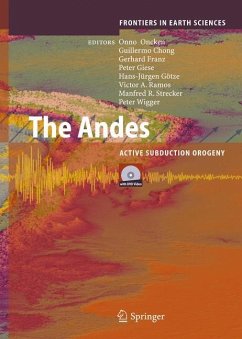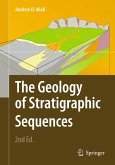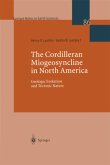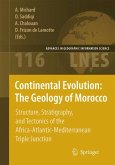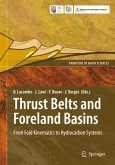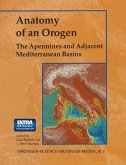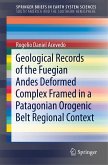This book provides the first comprehensive overview of a complete subduction orogen, the Andes, considered to represent the "type" subduction belt on Earth. Integrating the results from a wide variety of methods it provides the most compact and highly resolved geophysical image of an active subduction orogen complimented by detailed geodetic data and a range of geological observations. This allows the derivation of a sophisticated process-oriented understanding of the mechanisms driving subduction orogeny's in their various manifestations. The results of 12 years of integrated multi-disciplinary research is presented including a DVD containing maps, geological sections, geophysical results and a data archive.
Convergent plate margins and subduction zones are first order features shaping the Earth. Convergent continental margins combine the majority of processes that affect the internal architecture thermal and geochemical character of continental lith- phere. In addition, the close relationships between active deformation and uplift, m- matism and associated crustal growth, ore formation, the release of more than 90% of global seismic energy at convergent margins, make these plate boundaries imp- tant natural laboratories where mass and energy flux rates can be studied at various scales. Since the advent of plate tectonic theory, it has been recognized that all of these phenomena are intimately related and often governed by feedback mechanisms. Accordingly, subduction orogeny has become an international, high-priority theme in process-oriented, earth-system analysis. In this context, Dewey and Bird (1970) have defined the Andes as the type representative for orogeny and associated p- cessesat convergent margins in their benchmark paper. The Andes, therefore, p- vide an excellent natural laboratory for studying the above processes.
Hinweis: Dieser Artikel kann nur an eine deutsche Lieferadresse ausgeliefert werden.
Convergent plate margins and subduction zones are first order features shaping the Earth. Convergent continental margins combine the majority of processes that affect the internal architecture thermal and geochemical character of continental lith- phere. In addition, the close relationships between active deformation and uplift, m- matism and associated crustal growth, ore formation, the release of more than 90% of global seismic energy at convergent margins, make these plate boundaries imp- tant natural laboratories where mass and energy flux rates can be studied at various scales. Since the advent of plate tectonic theory, it has been recognized that all of these phenomena are intimately related and often governed by feedback mechanisms. Accordingly, subduction orogeny has become an international, high-priority theme in process-oriented, earth-system analysis. In this context, Dewey and Bird (1970) have defined the Andes as the type representative for orogeny and associated p- cessesat convergent margins in their benchmark paper. The Andes, therefore, p- vide an excellent natural laboratory for studying the above processes.
Hinweis: Dieser Artikel kann nur an eine deutsche Lieferadresse ausgeliefert werden.
From the reviews:
"This beautifully produced book is a comprehensive summary of the main findings and their implications in an easily accessible format. ... Overall the book reflects the enormous investment in geophysical data represented by this long-term project, and the resulting geophysical interpretations of crustal structure and processes. ... I recommend this book as an indispensable resource for serious researchers interested in the structure of this unique, active, subduction-related mountain system." (R. J. Pankhurst, Geological Magazine, Vol. 145, 2008)
"This beautifully produced book is a comprehensive summary of the main findings and their implications in an easily accessible format. ... Overall the book reflects the enormous investment in geophysical data represented by this long-term project, and the resulting geophysical interpretations of crustal structure and processes. ... I recommend this book as an indispensable resource for serious researchers interested in the structure of this unique, active, subduction-related mountain system." (R. J. Pankhurst, Geological Magazine, Vol. 145, 2008)

